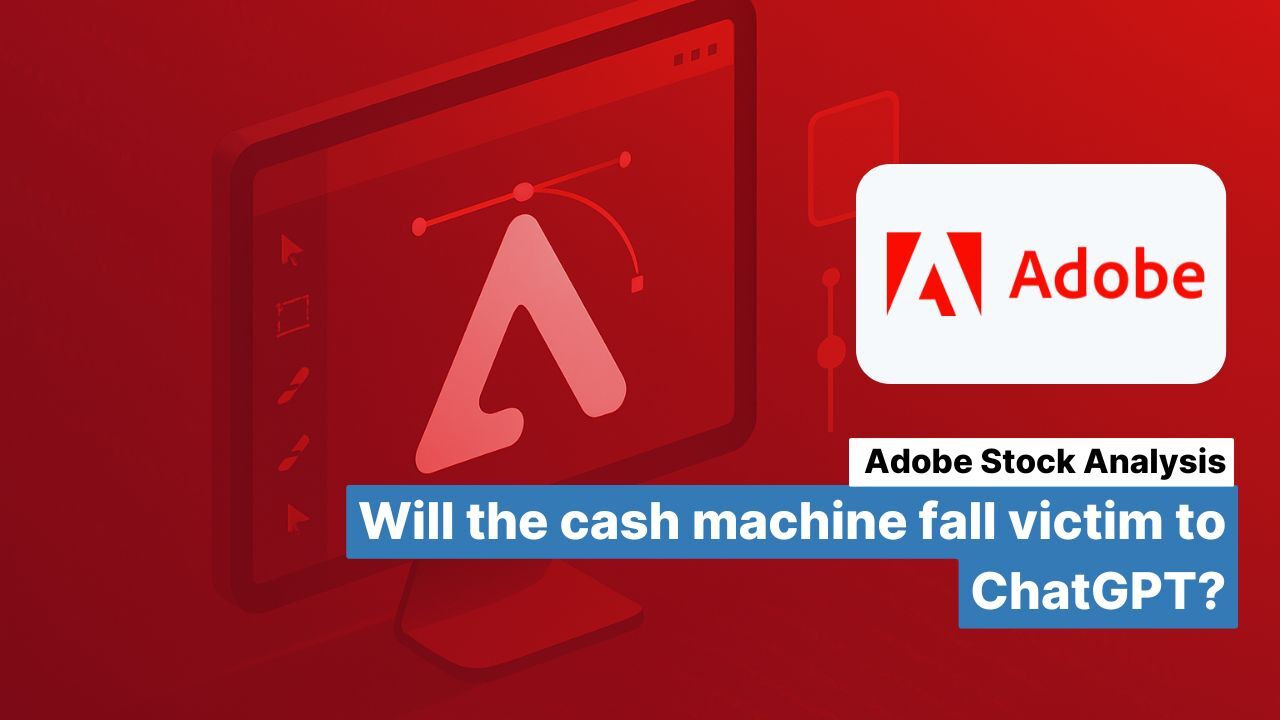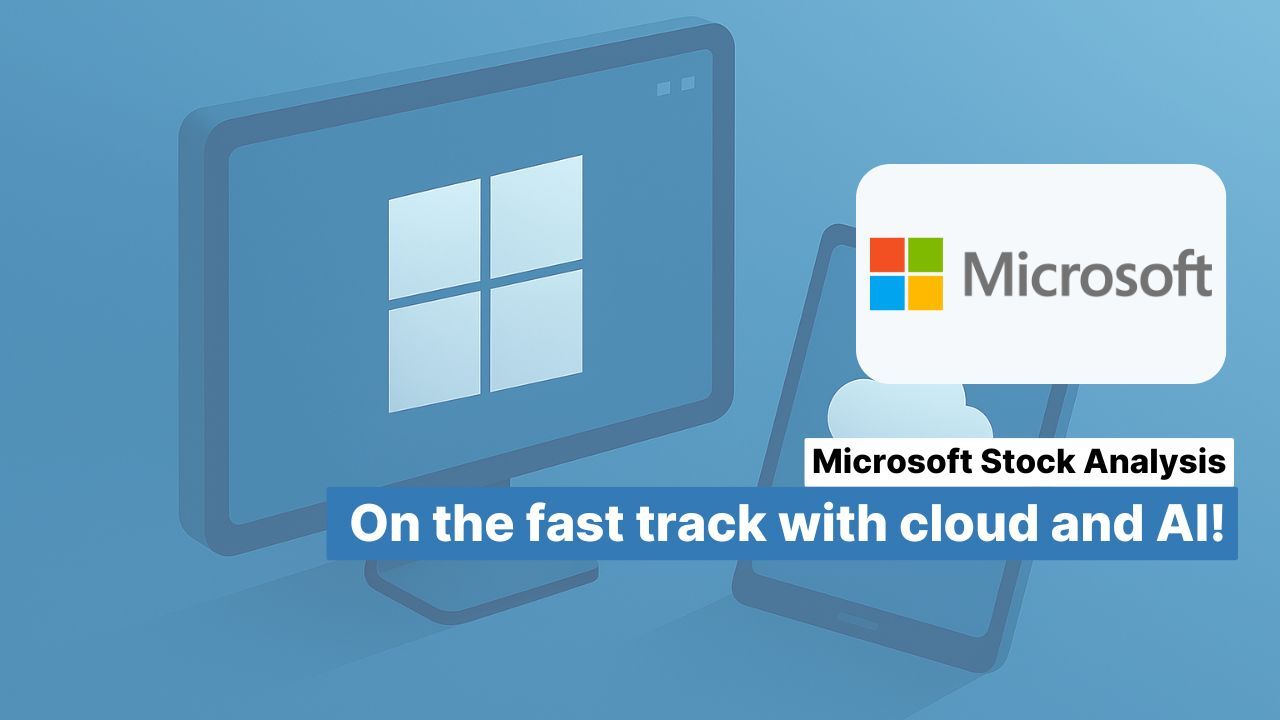Table of Contents
Almost all of us have used these products at some point or at least heard of them. Photoshop has long been considered the gold standard in image and video editing. Nearly all companies today would be lost without the ability to create and send PDFs. We are, of course, talking about Adobe stock (ISIN: US00724F1012).
In line with the company's high relevance, Adobe stock is also a stock market favorite for a long time. Between 2006 and 2021, the stock price increased more than twentyfold.
Source: Adobe stock
But the high was followed by a sharp decline. While the general technology sector was still responsible in 2022 and 2023, dragging almost all technology stocks down equally, Adobe stock have been in free fall since the beginning of 2024 at the latest due to another threat: artificial intelligence.
The increasingly rapid development of AI assistants and large language models (i.e., artificial intelligence that can communicate in human language, such as ChatGPT from OpenAI, Google Gemini, or xAI from Elon Musk) threaten Adobe's core business: the creation, editing, and commercial use of images and videos, for example in advertising campaigns. Despite double-digit revenue growth until recently, investors increasingly see the company as a victim of the disruptive power of AI. There is no other explanation for why Adobe's market value has almost halved (-47%) since the beginning of 2024 after decades of upward growth.
And as is always the case on the stock market, the slump has also had a significant impact on Adobe's valuation. Based on both revenue and free cash flow, the stock is now cheaper than it has been since 2013.
Source: EV Sales vs. EV/Free Cashflow
By way of comparison, in our last analysis from February 2025, just under six months ago, the ratio of enterprise value to sales (EV/sales) was just under 9 and the ratio of enterprise value to free cash flow was 24. The growth momentum has not changed in recent months.
As with many companies in the current AI hype, investors must now ask themselves: Are the current concerns exaggerated or justified? Will the company succeed in adapting its business model to the current circumstances? How quickly will the company be disrupted – or will it not be disrupted at all? Is Adobe a loser or perhaps even a winner of artificial intelligence? We attempt to answer all these questions in our HGI update.
💡In a nutshell
- Adobe is active in the digital media and digital experience sectors. While the digital media sector encompasses image editing and the generation and editing of PDFs, the digital experience sector is responsible for the analysis, personalization, and optimization of advertising campaigns.
- In contrast to previous years, Adobe's stock price has performed very poorly in recent years and significantly underperformed the overall market. Investors see the company as a victim of the AI revolution.
- Nevertheless, Adobe is currently reporting growing revenues and profits as well as very high operating margins. As a result of the stock price declines, the company has reached the lower end of its historical valuation range.
What does Adobe do?
Adobe's business is primarily divided into two divisions: Digital Media and Digital Experience. Last year, the Digital Media segment accounted for around three-quarters of revenue. Almost all of the remaining revenue came from Digital Experience, while the Advertising & Publishing segment contributed only 1% to revenue.
Digital Media
Digital Media's main business is heavily focused on two products: Adobe Photoshop and Adobe Acrobat.
Adobe Photoshop is primarily an image editing platform that can be used to create, crop, retouch, and extensively customize photos. Over the years, Adobe has added numerous features, so that today, among other things, foregrounds and backgrounds can be precisely edited, colors adjusted, and distracting elements such as cables or unwanted people removed. Artificial intelligence ensures seamless transitions, so that edits are barely noticeable.
For video editing, Adobe relies on specialized products such as Premiere Pro and After Effects, which offer professional editing, effects, and animation features. In addition, applications such as Adobe Illustrator (vector graphics) and Frame.io (collaborative video workflows) enable a broad creative ecosystem in which visual projects can be efficiently implemented and refined.
Adobe Express is a program that serves as an all-in-one solution for AI-generated content and can therefore be used as a complement to Adobe Photoshop. It enables beginners and professionals alike to efficiently create content for social media, marketing, or professional purposes. The platform offers a wide range of features, including templates, drag-and-drop, planning tools, and access to Adobe Stock and over 20,000 fonts.
Adobe Firefly, the company's family of generative AI models, is fully integrated into Adobe Express and other core products such as Photoshop and Illustrator. Firefly enables users to create commercially safe images, text effects, vector graphics, and designs based on text input. Firefly is integrated into core products such as Photoshop, Illustrator, Express, and Acrobat and follows a freemium model: there is free access with limited generative credits, while paid subscriptions (e.g., Creative Cloud/Express/Acrobat) include monthly credit quotas. Additional credits or Firefly plans are available for more intensive use; in the enterprise environment, Firefly is offered via corresponding license packages with clear usage rights and compliance commitments. The free entry point is primarily intended to lower the barrier for new users and remain competitive – not because Adobe is forced to offer its services completely free of charge.
A key distinguishing feature remains the database: Firefly is trained (according to Adobe) on Adobe Stock content, open license material, and public domain data to enable legally commercially usable results. In addition, Adobe provides generated content with Content Credentials (C2PA) – a digital proof of origin – which makes it transparent that and how an asset was created using AI. This increases trust and traceability, which is becoming increasingly important in the field of generative AI.
The Adobe Document Cloud, with its core product Adobe Acrobat, is also part of the Digital Media division. The Adobe Document Cloud is a cloud-based subscription service that automates digital document and signature processes and enables them across all devices. Users can create, review, sign, track, and securely store documents in the cloud. Adobe has also integrated AI that interacts with users and, among other things, answers questions about content from PDFs or generates content such as images within PDFs without users having to switch programs.
Digital Experience
Adobe Experience Cloud is a comprehensive platform for companies to deliver personalized customer experiences in real time and across all channels. The goal is to make the entire content delivery chain – from idea generation to delivery and optimization – more efficient and data-driven. The platform combines AI-powered data analysis, automated workflows, and targeted customer engagement to deliver personalized campaigns and content quickly and at scale. With Adobe Experience Platform, companies can consolidate customer data from multiple sources in real time, analyze it, and create precise audience profiles. Adobe Analytics helps turn interactions across all channels into actionable insights. The offering is rounded out by solutions for marketing automation, campaign management, and orchestrating individual customer journeys. In this way, Adobe helps companies work more efficiently, make better decisions, and create more relevant customer experiences.
Will Adobe still be needed in the age of generative AI?
The current answer is a resounding yes. Comparative tests between Adobe Photoshop and ChatGPT show, for example, that the latter can execute commands many times faster, but the accuracy and quality of the results are currently still significantly worse. Photoshop (still?) clearly outperforms OpenAI's AI, especially when it comes to converting portraits or filling images with generative AI. In addition, ChatGPT currently has limitations in terms of the resolution and scope of the content it generates. Adobe therefore currently has the edge, especially for businesses and professional content. Adobe, on the other hand, is trying to prepare for the worst, maintain its lead, and further complement its business model through acquisitions. For years, the company has been investing its profits in acquisitions such as Rephrase.ai. The company uses artificial intelligence to create digital avatars of people and produce hyper-personalized videos for businesses.
A far more spectacular acquisition was that of Figma, a company specializing in collaborative and faster design processes, for US$20 billion. However, Adobe had to abandon this deal in 2023 due to antitrust concerns in the EU and the UK.
Adobe stock in the second quarter of 2025
Despite its current lead in image editing, investors currently seem to view Adobe as a victim of the AI revolution. The latest evidence of this came in the second quarter figures, in which Adobe once again posted double-digit growth in revenue and operating profit and even raised its full-year revenue and profit estimates. Both segments, Digital Media and Digital Experience, posted double-digit growth rates and are growing at almost the same pace (11% and 10% year-on-year, respectively). The fact that EBIT rose even more sharply than revenue can also be seen as a clear indication that Adobe does not need to offer discounts to keep its customers on the platform amid all the hype surrounding ChatGPT. On the contrary, Adobe's costs are growing more slowly than its revenue – a good sign for the competitiveness of its products. The full figures are as follows:
Source: Financial data from Adobe
Adobe also announced stock buybacks of 8.6 million stocks in the past quarter alone. But it was all to no avail – the stock price continued its downward spiral and has lost another 15% since the announcement on June 12, 2025.
Source: Adobe price
Let's take a look at Adobe's balance sheet.
Source: Balance Sheet
The assets side of the balance sheet is characterized by high cash holdings. However, these are not sufficient to cover current liabilities. In addition, the company has a high level of intangible assets. Due to the many acquisitions since 2019, these consist almost exclusively of goodwill. Almost half of Adobe's assets are attributable to goodwill – a clear sign that Adobe, under intense competitive pressure, paid high prices for acquisitions that cannot be allocated to either tangible or intangible assets such as software.
It is also interesting to note that debt has risen almost in line with intangible assets in recent years.
Source: Intangible assets vs. Total Current Liabilities
Adobe stock as high-growth investing top scorers
However, according to HGI Strategy, the current figures look fantastic, to say the least:
Source: HGI-Score
Adobe shines with almost unrivalled margins, which enable the company to easily exceed the Rule of 40 score despite slowing growth. The gross margin of almost 90% is also very high and scores full points according to the HGI.
Due to the current decline in its stock price, Adobe also scores highly in the EV/sales and PEG ratio valuation criteria.
Analyst estimates for Adobe stock in 2026
Source: Adobe target price
They show Adobe’s recent stock price losses as exaggerated and mostly recommend buying the stock. In doing so, they set a price target that, on average, is nearly 44% above the current price.
How is Adobe managed?
Adobe's success over the past decades is also closely linked to the name Shantanu Narayen. The Indian immigrant has been CEO of Adobe since 2007 and, under his leadership, has expanded the company into a global technology giant with a focus on cloud solutions, artificial intelligence, and digital transformation. After working at Apple and his own start-up Pictra, he joined Adobe in 1998. There, he rose quickly through the ranks and shaped the company's transformation from a software provider to a cloud-based platform company. Narayen is a recipient of India's Padma Shri award, sits on several important committees, and was a member of President Obama's advisory board, among other things.
Conclusion
The capital market currently clearly ranks Adobe as a loser in the AI revolution – and possibly unjustly so. The company continues to shine with double-digit growth in revenue and profits, extremely high margins, and superior products. Adobe itself has a range of products and offerings based on artificial intelligence that have one key advantage: trust. In times of fake news and misleading deepfakes – including visual ones – Adobe is an institution with a high level of credibility. This is also demonstrated by the certification of its AI content. With the increasing spread and use of AI, this trust could become even more important.
Adobe undoubtedly faces strong competition from companies such as Alphabet (Google Gemini) and Microsoft (ChatGPT), which have virtually unlimited financial resources. This does not even take into account the many smaller companies specializing in visual AI. In the coming years, the company will have to prove that it remains an innovation leader and can offer its users products that are needed. The capital market has already anticipated these risks and punished the company severely. This opens up the opportunity to buy a highly profitable company with a P/E ratio of around 20 and an EV/FCF of around 15.
However, if the current AI programs succeed in actually matching Adobe in terms of quality and the company faces a period of stagnating or declining sales, the current valuation still leaves room for downside. But if Adobe continues to hold its own, the capital market could reward this over time and value Adobe at higher multiples due to its high profitability.
🔔 If you would like to receive weekly investment ideas and free stock analyses selected according to the Levermann, high-growth investing, or dividend strategies by email, you can subscribe to our free StocksGuide Insider now.




